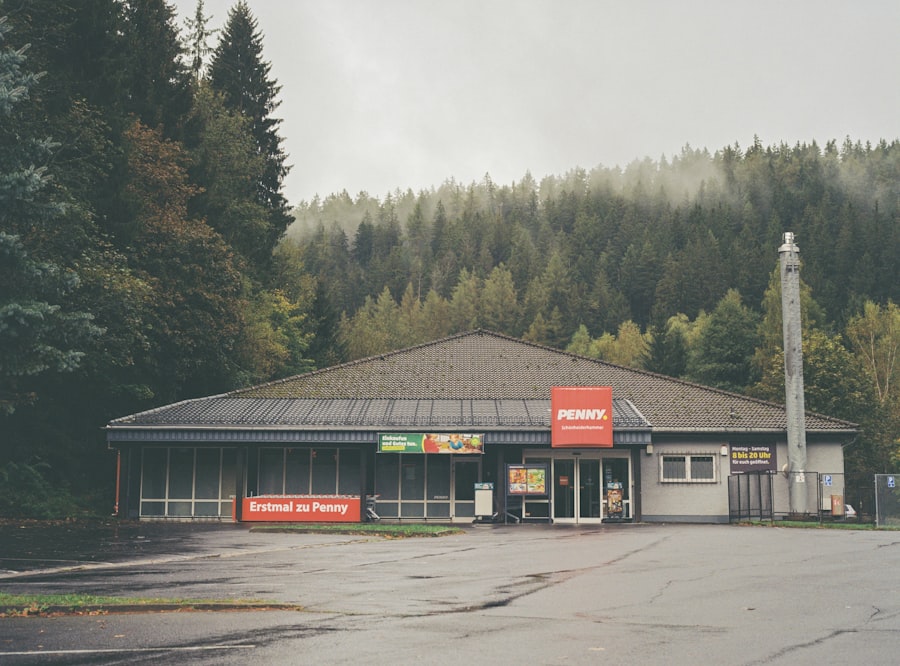The decline of rural grocery stores has become a pressing issue in many communities across the globe. These small, often family-owned establishments have long served as vital hubs for local residents, providing not only food and essentials but also a sense of community. However, in recent years, many of these stores have faced significant challenges that threaten their very existence.
The reasons for this decline are multifaceted, encompassing economic pressures, demographic shifts, and the rise of online shopping, among other factors. As rural areas continue to grapple with these changes, the implications for local economies and community cohesion are profound. The loss of rural grocery stores is not merely an economic concern; it also reflects broader societal changes.
These stores often serve as gathering places where residents can connect and share news, fostering a sense of belonging. Their decline can lead to increased isolation for individuals in rural areas, particularly the elderly and those without easy access to transportation. Understanding the factors contributing to this trend is essential for developing strategies to support and revitalize these crucial community resources.
Key Takeaways
- Rural grocery stores are facing economic challenges due to changing demographics, population shifts, and competition from big box retailers and chain stores.
- Online shopping has impacted rural grocery stores, leading to a lack of access to fresh and healthy food options for rural communities.
- Transportation and infrastructure issues, as well as difficulty in attracting and retaining skilled labor, are contributing to the decline of rural grocery stores.
- Government policies and regulations play a role in the challenges faced by rural grocery stores, impacting their ability to thrive in rural communities.
- Community engagement and support, along with strategic revitalization efforts, are essential for the survival and success of rural grocery stores.
Economic Challenges Faced by Rural Grocery Stores
Rural grocery stores are often caught in a web of economic challenges that make it difficult for them to thrive. One of the most significant issues is the limited customer base that many of these stores serve. With smaller populations in rural areas, sales volumes are often insufficient to cover operating costs.
This financial strain is exacerbated by rising costs of goods and services, which can squeeze profit margins even further. As a result, many rural grocery stores struggle to remain competitive, leading to closures that leave communities without essential services. Additionally, the economic landscape has shifted dramatically in recent years, with many consumers opting for larger retailers or online shopping options that offer lower prices and greater variety.
This trend has placed immense pressure on rural grocery stores, which often cannot match the pricing strategies of larger competitors. The combination of limited customer bases and increased competition creates a challenging environment for these small businesses, making it difficult for them to sustain operations over the long term.
Impact of Online Shopping on Rural Grocery Stores

The rise of online shopping has fundamentally altered the retail landscape, presenting both opportunities and challenges for rural grocery stores. On one hand, online shopping offers consumers the convenience of purchasing groceries from the comfort of their homes, often at competitive prices. This shift has led many consumers in rural areas to turn to e-commerce platforms for their grocery needs, further diminishing foot traffic in local stores.
As a result, rural grocery stores find themselves competing not only with nearby competitors but also with national and international online retailers. Moreover, the logistics of online shopping can be particularly challenging for rural areas.
This can create a paradox where consumers are drawn to online shopping yet find it less accessible than anticipated. Nevertheless, some rural grocery stores have begun to adapt by offering online ordering and delivery services themselves, attempting to capture a share of this growing market while maintaining their local presence.
Changing Demographics and Population Shifts
| City | Population | Demographic Change |
|---|---|---|
| New York | 8,336,817 | Increasing diversity with more immigrants |
| Los Angeles | 3,979,576 | Shift towards a majority-minority population |
| Houston | 2,320,268 | Rapid growth of Hispanic and Asian populations |
Demographic changes play a crucial role in the decline of rural grocery stores. Many rural areas have experienced population declines as younger generations migrate to urban centers in search of better job opportunities and lifestyles. This exodus not only reduces the customer base for local grocery stores but also alters the community’s overall demographic makeup.
As populations age and shrink, the demand for certain products may shift, further complicating the ability of rural grocery stores to meet the needs of their remaining customers. In addition to population decline, changing consumer preferences also impact rural grocery stores. Younger consumers tend to prioritize convenience and variety, often favoring larger retailers or online options that can provide a wider selection of products.
This shift in preferences can leave traditional grocery stores struggling to adapt their offerings to meet evolving demands. As communities change, so too must the strategies employed by local grocery stores if they hope to remain relevant and viable.
Lack of Access to Fresh and Healthy Food Options
Access to fresh and healthy food options is a critical issue in many rural areas, where grocery stores may struggle to stock a diverse range of products. Limited shelf space and financial constraints often lead to a focus on non-perishable items rather than fresh produce or organic options. This lack of variety can have significant implications for community health, as residents may find themselves relying on processed foods that contribute to poor dietary habits.
Furthermore, food deserts—areas with limited access to affordable and nutritious food—are prevalent in many rural regions. The absence of grocery stores that offer fresh produce can lead to increased rates of diet-related health issues such as obesity and diabetes among residents. Addressing this lack of access requires innovative solutions that not only support local grocery stores but also promote healthier eating habits within communities.
Competition from Big Box Retailers and Chain Stores

The competition posed by big box retailers and chain stores is another significant factor contributing to the decline of rural grocery stores. These larger establishments often benefit from economies of scale that allow them to offer lower prices and a wider selection of products than their smaller counterparts can provide. As consumers increasingly gravitate toward these larger retailers for their shopping needs, rural grocery stores find it increasingly difficult to compete.
This competitive advantage can lead to a vicious cycle where rural grocery stores lose customers and revenue, making it even harder for them to invest in improvements or expand their offerings. The presence of these larger competitors not only threatens the survival of local grocery stores but also diminishes the unique character and diversity of rural communities.
Transportation and Infrastructure Issues
Transportation and infrastructure challenges significantly impact the viability of rural grocery stores. Many rural areas lack reliable public transportation options, making it difficult for residents without personal vehicles to access grocery stores or other essential services. This lack of accessibility can lead to increased reliance on local stores; however, if those stores close due to economic pressures or competition, residents may find themselves without any viable options.
Additionally, infrastructure issues such as poor road conditions can hinder supply chain logistics for rural grocery stores. Delays in receiving shipments can lead to stock shortages or limited product availability, further diminishing customer satisfaction and loyalty. Addressing these transportation challenges is essential for ensuring that rural grocery stores can operate effectively and meet the needs of their communities.
Difficulty in Attracting and Retaining Skilled Labor
Attracting and retaining skilled labor is another hurdle faced by rural grocery stores. Many small businesses struggle to compete with larger employers who can offer higher wages and more comprehensive benefits packages. This challenge is particularly pronounced in rural areas where job opportunities may be limited overall.
As a result, grocery stores may find it difficult to hire qualified staff who can provide excellent customer service and manage store operations effectively. Moreover, high turnover rates can disrupt operations and create additional training costs for rural grocery stores. When experienced employees leave, it can take time for new hires to become familiar with store procedures and customer preferences.
This instability can negatively impact customer experiences and ultimately affect sales. To combat these challenges, rural grocery stores must develop strategies that not only attract talent but also foster a positive work environment that encourages employee retention.
Government Policies and Regulations
Government policies and regulations can significantly influence the landscape in which rural grocery stores operate. While some policies aim to support small businesses through grants or tax incentives, others may inadvertently create barriers that hinder their growth. For instance, stringent health regulations or zoning laws can impose additional costs on small grocery store owners who may already be struggling financially.
Furthermore, access to funding for small businesses is often limited in rural areas compared to urban centers. This lack of financial support can stifle innovation and prevent grocery store owners from making necessary improvements or expansions. Advocating for policies that promote small business growth and address the unique challenges faced by rural grocery stores is essential for ensuring their survival in an increasingly competitive market.
Community Engagement and Support
Community engagement plays a vital role in the sustainability of rural grocery stores. When residents actively support their local businesses by choosing to shop locally rather than at larger retailers or online platforms, they contribute directly to the economic health of their communities. Initiatives such as community-supported agriculture (CSA) programs or local farmers’ markets can help strengthen ties between consumers and local grocery stores while promoting access to fresh produce.
Moreover, fostering a sense of community ownership over local grocery stores can encourage residents to advocate for their survival. When individuals feel invested in their local businesses, they are more likely to support initiatives aimed at revitalizing these establishments. Building strong relationships between store owners and community members is essential for creating a supportive environment that prioritizes local shopping.
Strategies for Revitalizing Rural Grocery Stores
Revitalizing rural grocery stores requires innovative strategies that address the unique challenges they face while leveraging their strengths as community hubs. One approach is diversifying product offerings by incorporating locally sourced goods or specialty items that cater to specific consumer preferences. By emphasizing unique products that cannot be found at larger retailers, rural grocery stores can differentiate themselves in the market.
Additionally, embracing technology can enhance operational efficiency and improve customer experiences. Implementing online ordering systems or loyalty programs can attract tech-savvy consumers while streamlining inventory management processes. Collaborating with local organizations or government agencies to secure funding or resources for improvements can also provide much-needed support for struggling grocery stores.
Ultimately, revitalizing rural grocery stores requires a multifaceted approach that combines community engagement with innovative business practices. By addressing economic challenges while fostering strong connections within their communities, these essential establishments can continue to thrive despite the obstacles they face in an ever-changing retail landscape.
In recent years, many rural towns have faced the unfortunate trend of grocery store closures, which significantly impacts local communities. A related article on this topic can be found on MyGeoQuest, which explores the various factors contributing to this issue, such as declining populations, increased competition from larger chains, and logistical challenges in maintaining supply chains in less populated areas. These closures not only limit access to fresh produce and essential goods but also affect the local economy and social fabric of these communities. For more insights, you can read the full article by visiting this link.
WATCH NOW! Why America’s Heartland Is Disappearing Fast
FAQs
Why are grocery stores closing in rural towns?
Grocery stores in rural towns are closing for a variety of reasons, including declining population, economic challenges, and increased competition from larger chain stores.
What are some economic challenges that contribute to grocery store closures in rural towns?
Economic challenges such as rising operating costs, lower profit margins, and difficulty in attracting and retaining skilled workers can contribute to the closure of grocery stores in rural towns.
How does declining population affect grocery store closures in rural towns?
Declining population in rural towns can lead to a smaller customer base for grocery stores, making it difficult for them to remain financially viable.
What role does competition from larger chain stores play in the closure of grocery stores in rural towns?
Larger chain stores often have the resources to offer lower prices and a wider selection of products, making it challenging for smaller, independent grocery stores in rural towns to compete.
What impact do grocery store closures have on rural communities?
The closure of grocery stores in rural towns can have a significant impact on the community, leading to reduced access to fresh and affordable food, increased travel distances for residents to access groceries, and potential negative effects on local economies.
